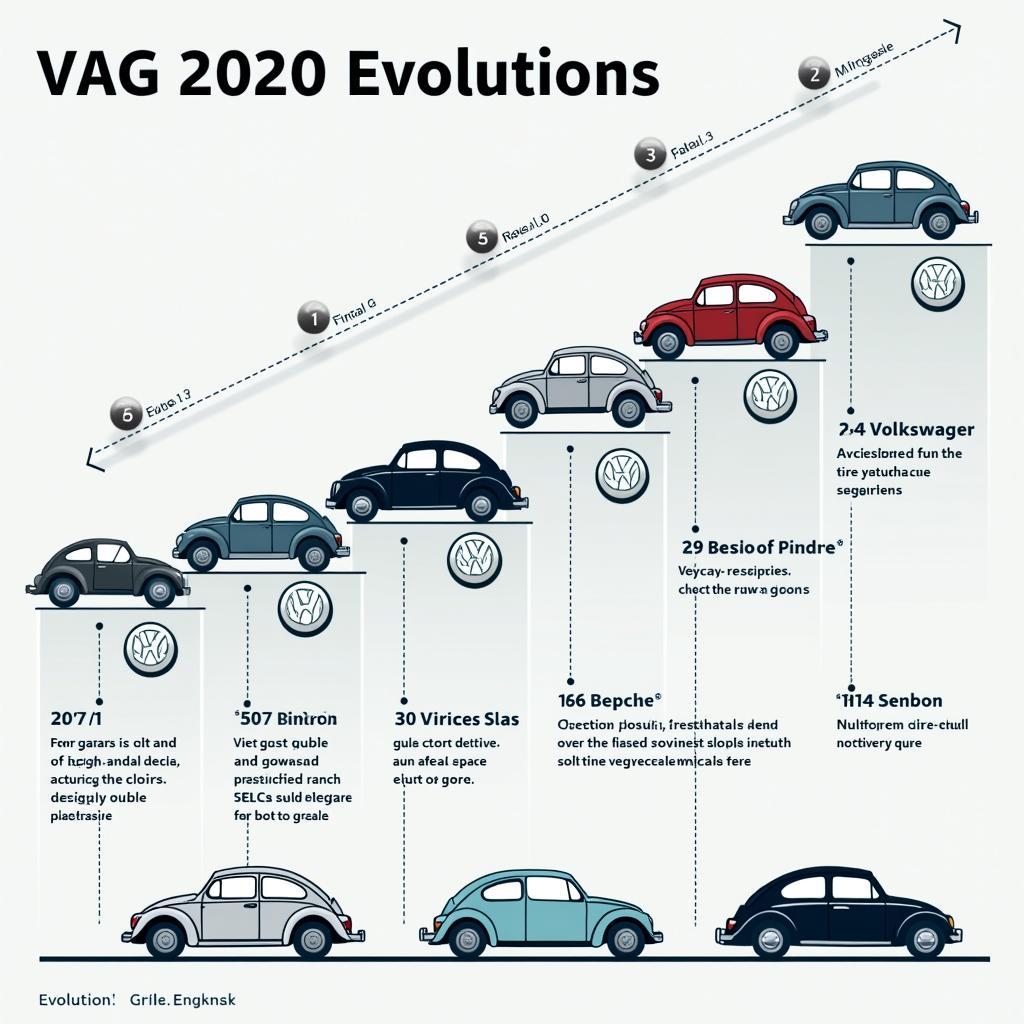The term “VAG” is omnipresent in the automotive world, but what exactly is behind it? This article comprehensively clarifies the meaning, history, and most important brands of the Volkswagen Aktiengesellschaft Group. We shed light on the technical innovations that VAG has brought forth and offer you valuable insights into the world of this automotive giant.
What Does VAG Mean?
VAG stands for Volkswagen Aktiengesellschaft, the largest automobile manufacturer in Europe and one of the largest worldwide. The group is headquartered in Wolfsburg, Lower Saxony, and includes numerous well-known car brands. VAG is often used synonymously with Volkswagen, but this is not entirely correct, as the group unites far more brands under its umbrella. Dr. Markus Kohler, author of “The History of the German Automotive Industry,” emphasizes the importance of the group: “VAG has significantly shaped German automotive history and is an important driver for innovation and technological progress.”
The History of VAG – From the Beetle to a Global Corporation
The history of VAG begins with the founding of “Gesellschaft zur Vorbereitung des Deutschen Volkswagens mbH” in 1937. The goal was to develop an affordable car for the general population – the legendary Beetle. After World War II, the company developed rapidly and expanded through the acquisition of further brands. Today, VAG is a global player with production facilities and sales networks all over the world.
 VAG history: From the Beetle to a global automotive group
VAG history: From the Beetle to a global automotive group
Which Brands Belong to VAG?
The VAG Group includes a broad portfolio of brands ranging from small cars to luxury vehicles. The best-known include: Volkswagen, Audi, SEAT, ŠKODA, Porsche, Bentley, Lamborghini, Bugatti, Ducati, and MAN. Each brand has its own character and appeals to different target groups. This diversity enables VAG to be present throughout the automotive market and meet specific customer needs.
Technical Innovations from VAG
VAG has repeatedly pioneered the automotive sector throughout its history. From the development of the first diesel engine with direct injection to the introduction of the modular transverse toolkit (MQB), the group has made a significant contribution to the advancement of automotive technology. “Innovation is the key to success,” says engineer Franziska Bauer in her book “Future Technologies in Automotive Engineering.” “VAG has recognized this and continuously invests in research and development.”
 VAG technological innovations: From past to future
VAG technological innovations: From past to future
VAG and the Future of Mobility
The VAG Group is facing the challenges of the future and is investing heavily in electromobility, autonomous driving, and digital networking. With innovative concepts and technologies, VAG aims to actively shape the mobility of tomorrow. The electrification of the vehicle fleet is a central concern in order to reduce CO2 emissions and meet the requirements for sustainable mobility.
Frequently Asked Questions About VAG
- What is the difference between VAG and Volkswagen? VAG is the group to which the Volkswagen brand also belongs.
- Where is the headquarters of VAG located? In Wolfsburg, Lower Saxony.
- Which other brands belong to VAG? Audi, SEAT, ŠKODA, Porsche, Bentley, Lamborghini, Bugatti, Ducati, and MAN.
More Information on autorepairaid.com
Would you like to learn more about the individual brands of VAG or need support with the repair of your vehicle? Visit our website autorepairaid.com. There you will find numerous articles, instructions, and tips on the topic of car repair. Our experts are at your side with advice and assistance.
Contact Us!
Do you need help repairing your VAG vehicle? Our experts are available 24/7. Contact us via our website autorepairaid.com. We look forward to helping you!
VAG: A Global Automotive Corporation with History and Future
VAG has significantly shaped the automotive world and is still an important player in the industry today. With a broad brand portfolio, technical innovations, and a clear focus on the future of mobility, VAG is ideally positioned to continue playing a leading role in the automotive industry in the years to come.

